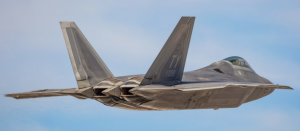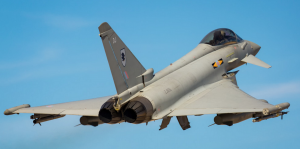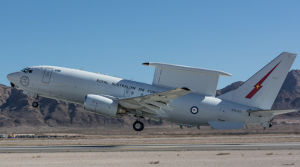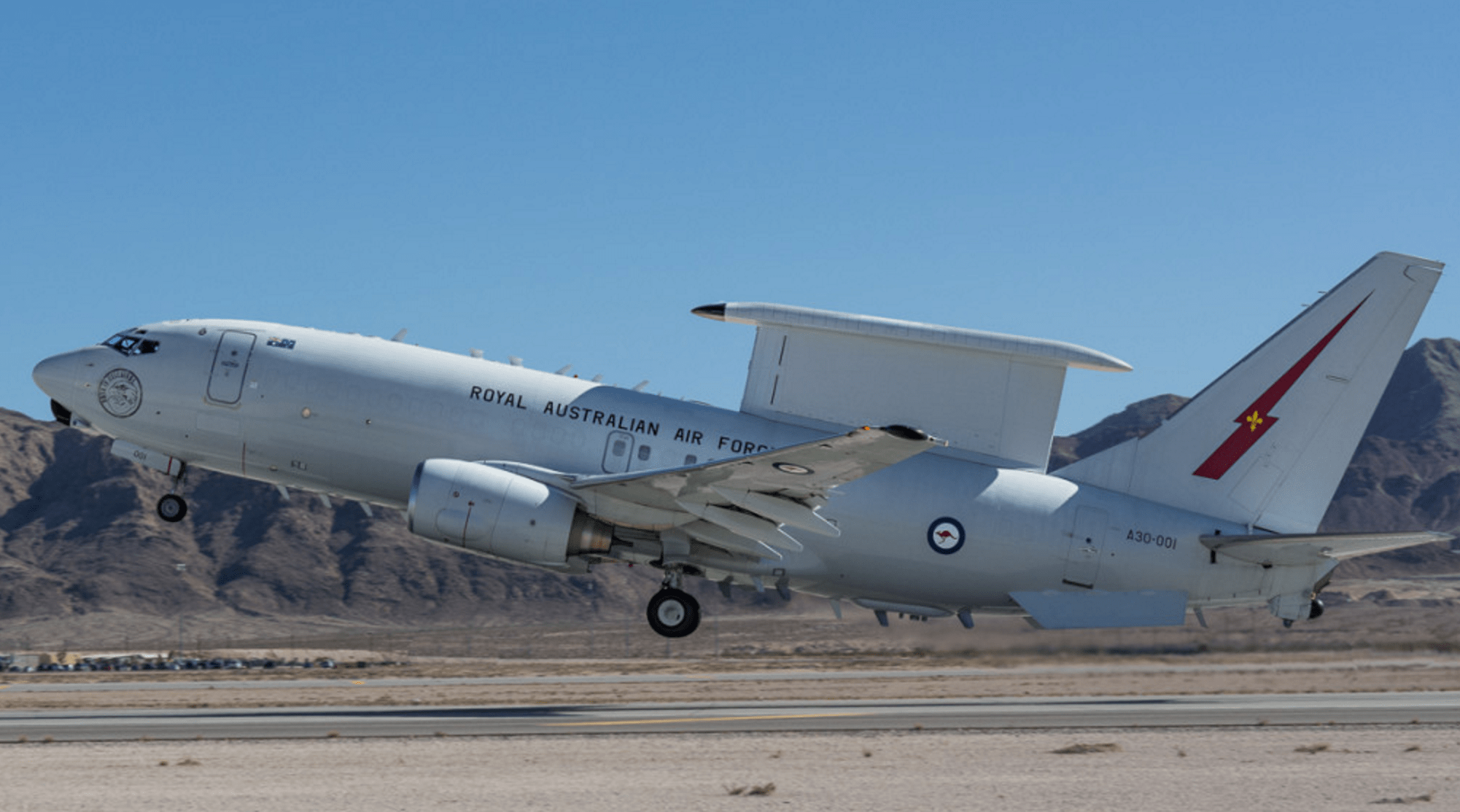2016-02-15 Red Flag is evolving as the services and partners focus on the need and capability to operate in the extended battlespace.
In early 2015, we visited Nellis, and discussed the evolution of Red Flag with senior USAF officers.
Col. Jeffrey Weed, the Commander of the 414th Combat Training Squadron clearly laid out the strategic direction for the evolution of Red Flag exercises in the period ahead.
With the need to train for a more difficult and more contested combat environments, training must adjust. Adjustments are necessary both to deal with evolving threats over great distances and to train for ways to more effectively integrate evolving blue systems as to operate in a contested environment.
As Col. Weed explained” “Although the airspace has not changed for the exercises — we still operate live fly on the NV Test and Training Range — we do use a MUCH larger geographic AOR for virtual and constructive participants.”
The challenge of synchronizing the various combat elements is increasingly complex; and the evolution of command and control to provide for synchronization in the expanded battlespace is a key requirement for enhancing the effectiveness of airpower.
A recent piece written by Steven Valinski and published by Aviation Photography Digest provided some useful insights into Red Flag 16-1 and the work of the USAF, the RAF and the RAAF with regard to training for air combat integration.
Along the way, the article provided insights with regard to three aircraft which we will be visiting during the year, namely, the F-22, the Typhoon and the Wedgetail.
Red Flag 16-1 took place from January 25 to February 12, 2016.
The full piece can be read here but we are highlighting some of the key points with regard to the three aircraft mentioned above, and the photos are credited to Aviation Photo Digest as well.
Red Flag is About Problem Solving as Air Combat Evolves
Integration has always been the core objective with Exercise Red Flag.
Yes, the exercise was born out of the need to simulate a pilot’s first ten combat missions, but Red Flag has grown to be much more than combat mission simulation. Red Flag is integration, Red Flag is problem solving, Red Flag is learning how to deal with a multitude of sophisticated threats, Red Flag is learning how to execute under pressure…and much more.
Colonel Kenny Smith, 57th Operations Group Commander, explains what one of the key objectives is with Red Flag exercises: “What we are trying to set up here is, we have units that are at home station doing, basically, single role type of aircraft.
The F-16’s that are from Aviano that are here just here today. They don’t get a chance to train with other platforms very often.
And so, when they show up here, one of the things we really want to tease out of them is: how do you integrate with other platforms? I’m going to think about the problems of an F-16 pilot, from an F-16 perspective.
I want that F-16 pilot, the mission commander is going to leave that large-force package, to be able to understand what the capabilities of an F-22 is, what the capabilities of the E-3 is, what the capabilities of the Super Hornets from Australia are and be able to integrate those to be able to deliver an effect for a joint force commander.
Essentially, the big takeaway for the people that are flying in these exercises here is when they go home, they have a better understanding of what those things are.”
During the course of Red Flag 16-1, the U.S., UK and Australia worked together to overcome communication and terminology differences, a lack of understanding of each other’s capabilities, differences in strategies and tactics and more to successfully reach common objectives.
The F-22 in Red Flag 16-1
For Red Flag 16-1, standing out among the Gen 4 and Gen 4.5 fighters is the Gen 5 Lockheed Martin F-22A Raptor air superiority fighter.
With its stealth capabilities and technology such as the BAE Systems EI&S AN/ALR-94 radar warning receiver (RWR), Lockheed Martin AN/AAR-56 infrared and ultraviolet Missile Launch Detector (MLD) and Northrop Grumman AN/APG-77 active electronically scanned array (AESA) radar, the F-22 is capable of air superiority in a matter of minutes.

However, with payload limitations, the F-22’s are best utilized when working together with other assets to help manage the battlefield and take out the enemy. 1st Lt. Emily Lebeau, 965th Airborne Air Control Squadron air battle manager out of Tinker AFB in Oklahoma, discusses how the Boeing E-3 Sentry works together with the F-22s:
“The F-22 has a much better ability to command the air-to-air. We work with them just because they know their tactics so much better than we ever could. So, it’s a lot more of us picking up the things they’re not looking at. Because their radar is going to look somewhere, but we’re looking everywhere. So, it’s more of backing them up…’hey, the entire fight’s happening over here, but nobody is talking about this person’.
And, we can manage that, at the same time we are working with other C-2 agencies, other intelligence platforms, to get them more data, more information to make their decisions in the air-to-air fight.”
The 965 AACS brought the latest E-3G block 40/45 to Red Flag 16-1, which is only the second time this upgraded model participated in a Red Flag exercise.
The Typhoon in Red Flag 16-1 and Coming to Red Flag 16-2
The RAF brought Typhoons from 3rd Squadron to Red Flag and the Italians are bringing their Typhoons to Red Flag for the first time and will fly during Red Flag 2016-2.
In terms of aircraft, the RAF (United Kingdom) brought Eurofighter Typhoon FGR4s, a Raytheon Sentinel R1, a Lockheed Martin C-130J-30 Hercules C4 and a Boeing E-3D Sentry….
Lt. Col. Kevin “Flash” Gordon, 414th Combat Training Squadron deputy commander, gives us some insight into these missions, or “fights”: “So, the fights are 90 minutes and when the ‘Blue’ participants are flying, they are taking off usually anywhere from 45 minutes to 20 minutes before the VUL starts. They may go hit a tanker first to top-off with gas before the fights starts.

And then, typically the first 10 minutes or so it’s solely air to air going on where you’d have the ‘Blue’ escort fighters, so your F-22’s, the British Typhoons, maybe the F-15C’s or whatnot, going across the airspace and trying to clean the aggressors out.
To provide that air supremacy for the rest of the fight.
And the next phase goes into the suppression of enemy air defenses, to now where you’ll have the Growlers or the F-16CJ’s come in and now try to suppress some of those surface-to-air threats, just like you would expect in the real-world. Again, we are trying to make Red Flag as realistic as possible.
So, all those aspects that you are going to see in a live, real-world, combat operation, you are going to see at Red Flag.
And then, kind of the final phase is now the air-to-ground strike aircraft, the B-1’s, F-15E’s, F-16’s, whatever…they’ll come in drop their bombs on the targets and they’ll all get out of ‘bad guy land’ successfully…go back home. And, all that takes place in about a 90 minute fight. ”
The point about the Typhoon it has become a regular participant and is assumed into the coalition air superiority mission and integrated with the F-22 along with the F-15 Cs.
A nice statement of its current capabilities, which will now evolve with the next round of upgrades in terms of radars, missiles and aerodynamic changes as well.
The RAAF and the Wedgetail
The Royal Australian Air Force (RAAF) participated with one of its largest contingents ever for a Red Flag with 14 aircraft and over 400 personnel. The RAAF’s role was vital to the success of the overall mission of Red Flag 16-1.
Group Captain Philip Gordon, Air Expeditionary Wing vice commander, RAAF, explains: “We are part of this big coalition here, this air expeditionary wing.
So we’re fully plugged into all the mission planning and it’s a great opportunity for each of the countries to learn a bit more about each other’s capabilities.
And, really building a good team that imparts the strengths of individual systems and mitigates any weaknesses.

So, we have different scenarios each day which present different tactical problems.
So, we develop a solution, we brief it, we go fly it, we learn a bunch of lessons. But, we are fully integrated with the US and the UK in the missions and we’ll fly all the elements and the roles there be it, air control, strike, dynamic targeting…we’ll be involved in all of that with our aircraft…..”
Australia brought its unique Boeing E-7A Wedgetail airborne early warning and control (AEW&C) aircraft.
Based on the Boeing 737, the E-7 is designed to help control the battlefield from the sky by communicating with other aircraft while utilizing an advanced Multi-Role Electronically Scanned Array (MESA) radar.
This sophisticated technology gathers information from a variety of sources and sensors, analyses it, then distributes pertinent information to the other assets in the battlefield. Australia also brought its uniquely configured AP-3C.
Conclusion
As Col. Weed put it in our 2015 interview with him:
Expanding the venue of Red Flag is seen as crucial to insert the realities of the expanded battlespace facing the combat air force.
According to Col. Weed, “if you have an uncomplicated air war, the operational C2 is relatively easy, and you have time.
But operating in a compressed time scale over a large battlespace is a very different matter.
The strike force is simultaneously working complex ISR tasks, missile defense task, protection against electronic and cyber attack and determining the targets to go after – this is the reality against which we need to train.
And that is where we are going with Red Flag.”


